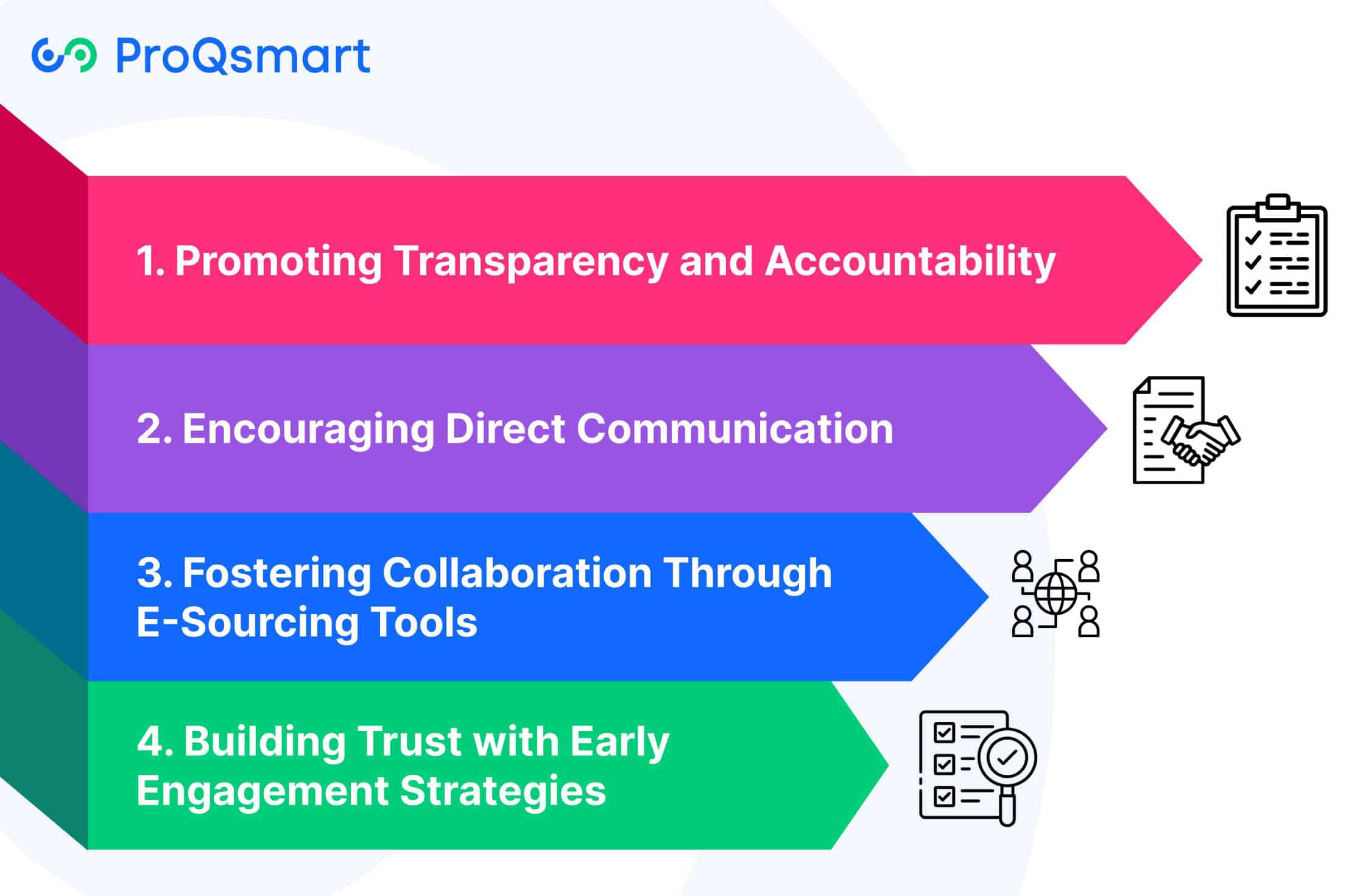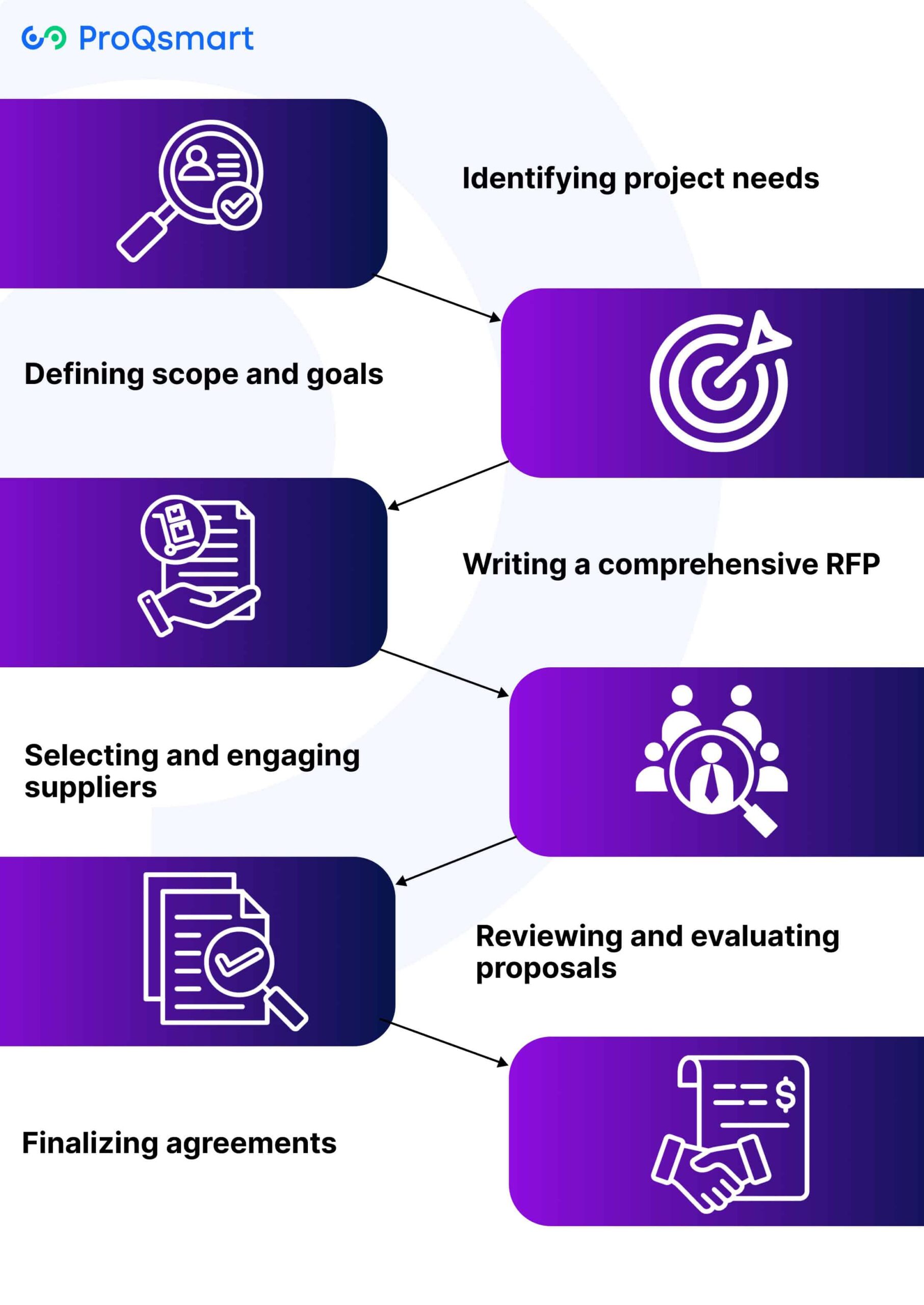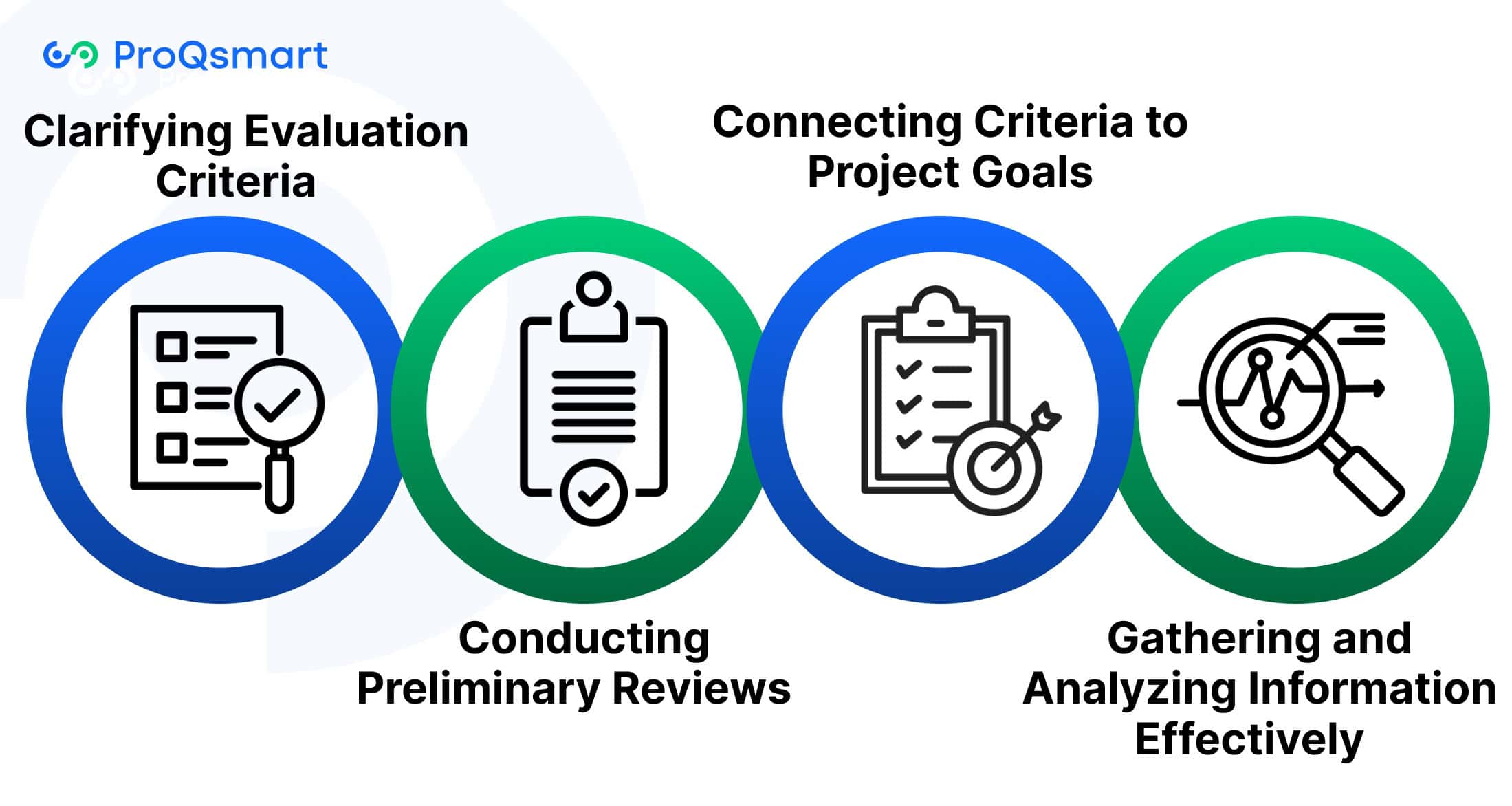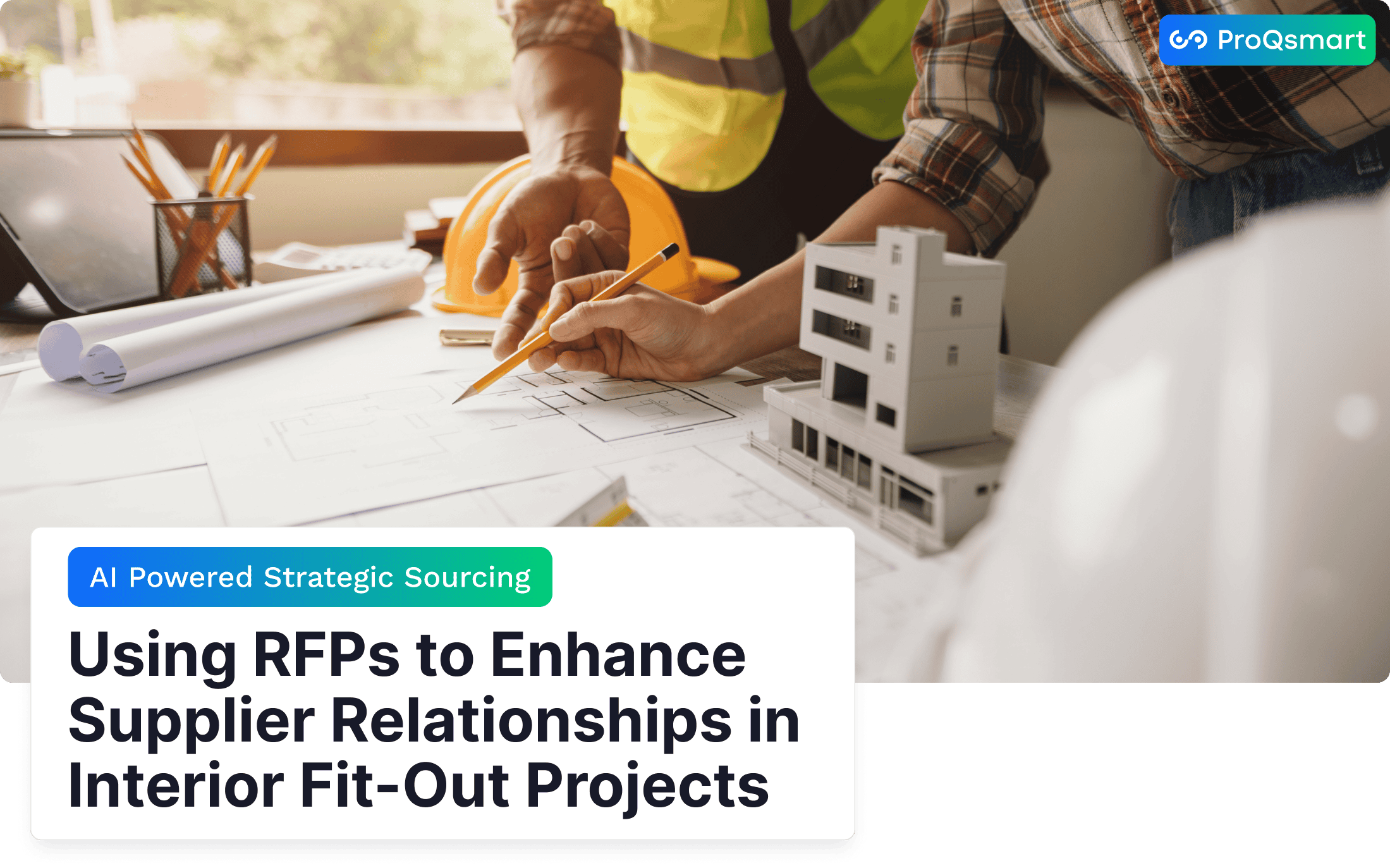An RFP, or Request for Proposal, is a highly structured formal document typically developed by governmental agencies. It describes their needs and solicits competing proposals from vendors for a defined project.
It delivers a strategic framework for sourcing that drives more effective communication of goals and requirements from buyers to suppliers. RFPs have become an indispensable part of procurement.
They facilitate robust comparison of competing options, evaluation of capabilities, and obtaining the best value for goods or services. By establishing specific criteria and deadlines, an RFP methodizes the selection process with the added benefit of protecting transparency and fairness.
For the private sector, it is an invaluable resource to find the right partners, mitigate risks and reach strategic objectives. A thoughtful RFP can go a long way in setting the stage for successful procurement and cultivating lasting partnerships.
How the RFP Process Works
The RFP process allows for a deeper dive into topics, helping you align closely with your organizational goals.
It starts with determining the needs of the project and writing the RFP document, which details objectives, scope of work, and criteria for evaluation.
Once the RFP is published, vendors submit proposals outlining their proposed solutions, costs, and timelines. Engagement from impacted stakeholders is critical at each phase to ensure the RFP reflects the organizational priorities and needs.
These important steps can include,
Publishing the RFP
Evaluating submissions
Creating a shortlist of vendors
Holding demonstrations or evaluation
Open and transparent communication with vendors during this phase will help everyone understand what is being asked for and what the expectations are.
Once you’ve selected a vendor, contract negotiations then finalize the agreement and allow for beginning work on the project itself. An RFP for supply chain software can be hugely improved with help from logistics teams. Their insights are invaluable in making sure that the solution is properly integrated into the flow of daily operations.
This vital process fosters greater success by promoting the best fit between vendor expertise and project vision. Stakeholders are essential in refining basic priorities such as budget limitations and sustainability targets. They make sure that the proposal that is ultimately selected fulfills all of their diverse needs.
Importance of Supplier Relationships
We all know that strong supplier relationships are critical in helping to make any procurement initiative or project a success. These relationships are not just transactions, but the foundation of delivering high quality, low cost, on-time projects. Creating these kinds of partnerships takes much more time and energy, for one simple reason—collaboration and trust don’t happen overnight.
Suppliers are critical partners in maximizing the short- and long-term outcomes of every project, and investing in these relationships can create value throughout the procurement process.
Role in Interior Fit-Out Projects
Interior fit-out projects, which are frequently complex, highly detailed, fast-paced, and on tight schedules, are even more reliant on high-quality supplier relationships. This is why suppliers and contractors need to be in lockstep, with suppliers delivering the right materials on time.
When you source quality flooring or lighting solutions from a supplier you can trust, you’ll save yourself costly delays and rework. This proactive approach saves you money in the long run.
Collaboration among all parties is key to mitigating risks, especially in complex projects where multiple stakeholders are involved. Building a strong supplier network gets you away from being dependent on a single supplier.
This strategy reduces the likelihood of supply chain disruptions from natural disasters or geopolitical shocks. Clear and consistent communication between parties ensures everyone remains aligned with the project’s goals, fostering a seamless workflow and a sense of harmony.
Long-Term Benefits of Strong Relationships
Strong supplier relationships provide lasting benefits that extend beyond specific projects and contracts. Soon, consistent quality is your trademark as suppliers learn what you require and deliver on it.
For example, collaborative suppliers are much more likely to accommodate your needs during times of high demand. Strong, long-lasting partnerships foster innovation, with suppliers more likely to pitch innovative solutions that can be customized to your business.
Trust further becomes a key ingredient in attaining favorable terms in the procurement contract negotiation process, making the procurement lifecycle exponentially more efficient. By 2030, AI-driven tools will deepen and democratize these partnerships.
This evolution, if done right, will drive even greater levels of supplier performance and supplier adaptability.
"Don't let the complexities of RFP drafting slow you down. Download our Editable RFP Template and take the first step towards efficient vendor selection and project success."
How RFPs Enhance Supplier Relationships

1. Promoting Transparency and Accountability
Transparency in an RFP process fosters trust by making clear that all vendors know how they will be selected. Transparency through clear documentation of requirements and evaluation metrics helps suppliers understand exactly how to tailor their proposals to the buyer’s needs.
Moving forward only those vendors that align to critical criteria through the RFI phase saves time and increases clarity of purpose. This strategy adds another layer of fairness to the RFP process.
Accountability builds supplier trust since buyers promise to evaluate fairly with the use of consistent scoring rubrics. Maintaining a record of decision via thorough written documentation creates excellent audit trails and ensures transparency and integrity at every stage.
A two-step process, beginning with an RFI, makes sure suppliers understand your expectations from the get-go, creating a solution-oriented environment from the outset.
2. Encouraging Direct Communication
Direct communication channels built into RFPs foster cooperation. By responding to vendor questions in a timely manner, buyers show that they are serious about supplier engagement.
For example, a single vendor’s questions shared with their peers can foster collaboration across the industry. Frequent communication throughout the RFP cycle continues to develop these relationships, as suppliers appreciate being seen as valued members of the process.
Including project personnel directly working with suppliers helps create this alignment. For instance, when we balance our surgeons with our primary suppliers, we can find optimal coverage and save money.
3. Fostering Collaboration Through E-Sourcing Tools
E-sourcing tools make it easier than ever to run RFPs while fostering collaboration with suppliers. Collaborative platforms, such as ProQsmart, provide tools that promote clear lines of communication and ensure constant engagement.
Cloud-based SaaS solutions like ProQsmart, significantly reduce the administrative burden, keeping suppliers informed and able to provide responses quickly and conveniently. Collaborative functionalities like shared dashboards foster accountability, making sure everyone’s on the same page and minimizing hold ups.
4. Building Trust with Early Engagement Strategies
By involving suppliers early in projects to form partnerships, relationships are deepened. By guaranteeing product trials for smaller suppliers, they do more than provide opportunities for new entrants—they lay down the challenge for incumbents to innovate.
Moreover, assuring proactive communication during these earliest stages, you can anticipate challenges before they arise and engage in cooperative problem-solving. This RFP approach builds long-term trust, which helps both buyers and suppliers in the long run.
Steps in the RFP Process

The RFP process offers a formalized process to vet vendors. It makes sure that project needs match vendors’ capabilities to a tee. Breaking the process into clear steps simplifies the complexity, offering a roadmap for achieving project goals efficiently. Below is an overview of the key steps:
Identifying project needs
Defining scope and goals
Writing a comprehensive RFP
Selecting and engaging suppliers
Reviewing and evaluating proposals
Finalizing agreements
Each step matters for successful project delivery. It requires careful coordination among diverse stakeholders and careful documentation to ensure that all the players involved stay transparent and on the same page.
Identifying Project Needs
Defining project requirements is foundational to the RFP process. This begins with a discovery phase, which involves stakeholder interviews to gather insights and clarify objectives. For instance, if you’re sourcing software, understanding your team’s pain points ensures the RFP addresses them directly.
Identifying needs helps determine whether an RFP—or potentially an RFI (Request for Information)—is the right starting point to explore vendor capabilities.
Defining Scope and Goals
A detailed scope of work clearly defines what is included and excluded, leaving no room for misinterpretation. Measurable goals, whether that’s hard cost savings or bringing something to delivery in a set time frame, gives a metric to judge vendors against.
This clarity is critical in helping ensure vendor capabilities are aligned with overarching project objectives.
Writing a Comprehensive RFP
A good firm RFP package will include clear project goals, submission guidelines, and criteria for selection, while tools like ProQsmart enhance the bidding process by automating workflows, tracking compliance, and facilitating communication for better transparency.
"Don't let the complexities of RFP drafting slow you down. Download our Editable RFP Template and take the first step towards efficient vendor selection and project success."
Selecting and Engaging Suppliers
Identify and invite qualified suppliers to participate in the RFP process by using effective RFP templates. Cast a wide net to ensure a diverse pool of potential vendors, considering factors such as expertise, experience, and industry reputation. Engage with suppliers proactively, answering common RFP questions and providing clarifications to foster transparency and encourage high-quality submissions.
Reviewing and Evaluating Proposals
Establish a structured evaluation process to assess proposals objectively and fairly by using effective RFP scoring criteria. Utilize predefined criteria to score submissions based on factors such as technical competence, cost-effectiveness, and alignment with project scope. This systematic approach ensures that the selection process is transparent, defensible, and leads to the identification of the most qualified suppliers.
Finalizing Agreements
Following the evaluation process, negotiate and finalize agreements with the selected supplier by utilizing effective RFP templates. Clearly articulate terms and conditions, including deliverables, timelines, payment schedules, and performance metrics. A well-defined contract protects both parties and sets the foundation for a successful partnership throughout the project lifecycle.
Best Practices for Supplier Selection

Choosing the best supplier is one of the top tenets of successful procurement. A more methodical approach makes for better alignment with project goals, builds better relationships, and reduces risk. Below are best practices to navigate this critical process:
Define clear evaluation criteria to streamline decision-making.
Conduct preliminary reviews to narrow down qualified vendors.
Align supplier capabilities with project objectives for better outcomes.
Maintain continuous communication to ensure clarity and collaboration.
Document every step for transparency and accountability.
Clarifying Evaluation Criteria
Setting evaluation criteria in advance is a must. Criteria should closely correlate with desired project outcomes like cost-effectiveness, timely delivery, or meeting environmental requirements.
Openness in sharing standards builds trust among stakeholders, and flexibility ensures that changes can be made as needs develop and change over time. For example, in interior fit-out projects, engaging stakeholders from 5-6 different functions makes sure that evaluation criteria captures everyone’s needs, resulting in a better fit with selected vendors.
Conducting Preliminary Reviews
Early preliminary reviews give you an opportunity to identify qualified suppliers up front. A checklist takes the guesswork out of it, making sure that important criteria such as financial health or previous performance record are evaluated.
Documenting findings improves transparency and proves useful during negotiations, which are key to going beyond initial scores. For instance, some organization will conduct an RFI initially to get a sense of the market, and then an RFP to receive formal proposals.
Connecting Criteria to Project Goals
Evaluation criteria should align with the purpose and need for the project, including effective RFP requirements. Prioritizing categories of work, such as sustainability or cost-savings initiatives, further focuses the purpose. Engagement with stakeholders through an inclusive process helps to prioritize and align shared goals.
Gathering and Analyzing Information Effectively
Data-driven approaches to help identify the best suppliers can save both time and money. Using cloud-based tools such as ProQsmart makes it easier to collect and analyze information, providing capabilities for real-time tracking and automation.
This approach not only cuts down on typical RFP headaches, but helps with supplier compliance and performance tracking.
Role of Technology in RFPs
Technology has changed the Request for Proposal (RFP) game. Today, procurement professionals have robust technology that can increase efficiency, improve equity, and enhance collaboration. Organizations can overcome the drawbacks of traditional RFP approaches by utilizing next-generation platforms and e-sourcing technologies.
This method shortens workflows and speeds time to vendor selection.
Benefits of E-Sourcing Tools
E-sourcing tools have transformed procurement by automating administrative tasks that are monotonous, repetitive, and set up so many people to fail. Automation makes it easier to create an RFP, track all changes to the document, and hold vendors accountable to respond on-time.
AI-powered systems such as ProQsmart reduce the need for human intervention. They provide actionable insights that let you make quicker, better informed decisions.
Better supplier engagement is another advantage. ProQsmart help enhance supplier engagement by providing feedback loops and clear evaluation metrics, building trust and accountability. E-sourcing cuts overhead costs by consolidating data into one source, cutting out redundancy and ensuring adherence to procurement policy and procedures.
Streamlining Proposal Management
To deal with proposals efficiently, agencies need to have centralized systems to house and catalog each of the documents to quickly retrieve them. Platforms such as ProQsmart simplify this by offering collaborative templates, checklists, and automated workflows to ensure compliance and uniformity across all proposals.
A centralized system is not only more accurate but minimizes the chance for human error, especially on projects of a larger magnitude. Good communication is the cornerstone of any great partnership.
With real-time collaboration tools, everyone on the internal team and the supplier side stays on the same page, moving seamlessly from issuing RFPs to finalizing contracts.
Enhancing Collaboration with Suppliers
Further, collaboration tools improve supplier relationships with open channels of communication. ProQsmart’s easy, intuitive, and real-time collaboration tools give suppliers a platform to be active participants in their own decision-making processes.
This early involvement creates greater understanding and alignment between all parties. These transparent platforms make it easy to conduct frequent performance evaluations, fostering ongoing improvement in supplier relationships.
Conclusion
RFPs create a clear path for building strong supplier relationships. They set the stage for better communication, fair evaluations, and smarter decisions. A solid RFP process helps you find the right suppliers and keeps your goals aligned with theirs. Technology speeds up the steps and reduces errors, making everything smoother.
With the right strategies, these challenges become surmountable tasks. When executed properly, RFPs save time, money and ensure a better outcome for your company.
Lasting partnerships are built through clear processes and open collaboration.
Begin today to start shaping a more positive experience with your suppliers and realize the impact it can have on supplier relationships.
Request a demo with ProQsmart today and see how our platform can transform your RFP process and strengthen your supplier relationships!






